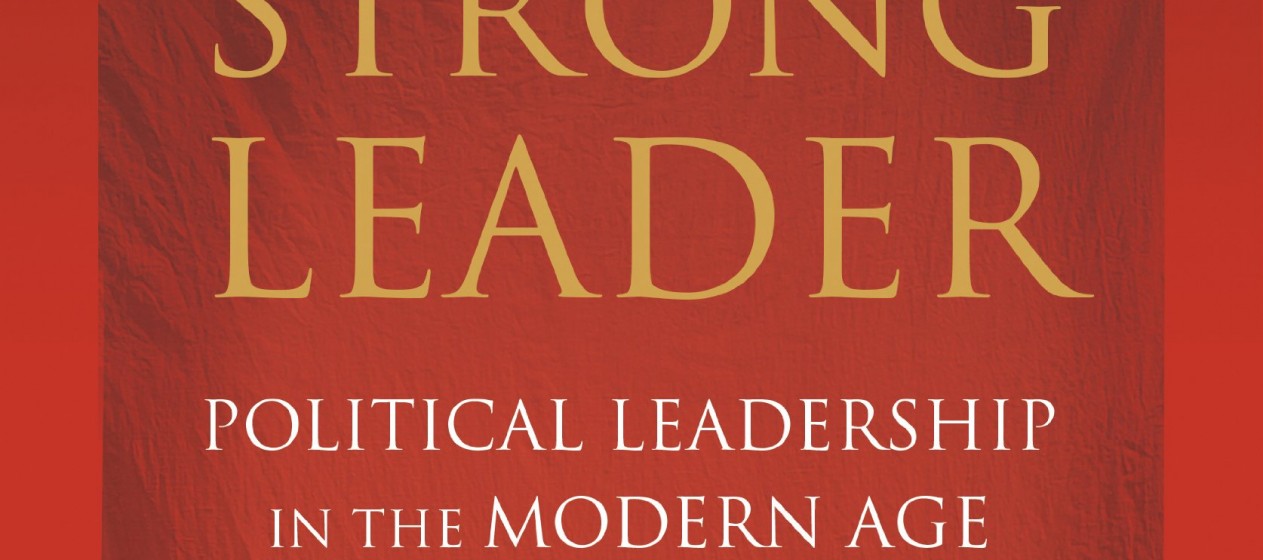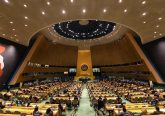Just under a decade ago, Archie Brown highlighted several factors that he thought limited the explanatory power of comparative politics as an academic discipline. Such factors included undue emphasis on studying democracies at the expense of autocracies, a lack of methodological pluralism, inadequate attention given to understanding political leaders, its separation of domestic and international relations, and its increased isolation from the “real world of politics” that the discipline sought to explain.[1] ‘The Myth of the Strong Leader’ is a book that addresses all of these criticisms demonstrating both erudition on behalf of Brown and a keen ability to practice what he preaches. This book may well be a significant point of reference to political scientists and the general public.
Brown’s thesis is a strong rebuttal to a commonly held point of view, arguing that a ‘strong’ leader – defined as someone who “concentrates a lot of power in [their] hands, dominates both a wide swath of public policy and the political party to which [they] belong, and takes the big decisions” (p. 1) – is ultimately an undesirable leader. In fact, Brown convincingly shows throughout the book that the more power is concentrated in one individual’s hands, the more likely they will make catastrophic policy errors. In some cases these errors could literally be measured in millions of wasted lives. What should be desired, Brown argues, is ‘collective leadership’ whereby political leaders show receptiveness to perspectives that could potentially conflict with their own both from colleagues and outside expertise before decisions are finally made (pp. 2, 19).
In chapter 1, Brown demonstrates an interdisciplinary perspective on leadership in an attempt to understand the origins of the concept drawing on a broad range of findings from disciplines as diverse as sociology, psychology and anthropology. Following the example of other distinguished political scientists such as Azar Gat and Francis Fukuyama[2], Brown even extends the analysis of leadership back to pre-historic times analysing its emergence in earlier forms of social organization such as egalitarian hunter-gatherer societies noting that with increased community size came the rise of authoritarian chiefdoms, arguably the first true political leaders (pp. 40-2). Crucially, Brown observes that variation will exist regarding the overall agency of a leader vis-à-vis the political context within which they operate noting differences in political culture (pp. 42-8), institutional settings (pp. 53-6) and political parties (pp. 56-60).
In this chapter, Brown also charts the rise of women into positions of political leadership writing that “by 2013, more than eighty women had held the highest elected governmental office in a variety of countries, spanning every continent in the world” (p. 38). However, it is notable that the leaders referenced against Brown’s typology are practically all men, with the exception of Margaret Thatcher. True, the position of political leader has been generally been dominated by males and Brown’s book may simply be a reflection of this fact. Nevertheless, this could bring up questions about whether this typology may unduly neglect the achievements that women leaders have made to political life and/or whether leaders that could have ticked the typological boxes Brown draws were left out. A case can surely be made for Indira Ghandi, for instance, who redrew the map of South Asia by providing vital support to the fledgling state of Bangladesh and, as a result, initiated, some have argued, perhaps the first humanitarian intervention in the 20th Century; a full two decades before the Americans intervened in the Balkans to prevent similar atrocities.[3] If Brown is also to include Nelson Mandela, who arguably made his name as much by his actions before gaining political power than after, then a discussion of political activists such as Emmeline Pankhurst or, perhaps even more so, Eleanor Roosevelt who successfully campaigned towards removing, or at least alleviating, a different kind of apartheid from their respective societies would have also made a welcome addition.
Chapter 2 further develops the theme of structural constraints in relation to understanding how political leaders shape outcomes in democracies. Brown makes good use of up-to-date political science research to dispel myths which ‘strong’ leaders often believe of themselves; namely that they have a determining effect on election outcomes and a voter’s party affiliation though he notes that obvious discrepancies will exist between parliamentary and presidential systems in these regards. For instance, Brown takes aim at Tony Blair who argued that he personally won three elections when factors such as popular discontent with the Major administration and artificial inflation of vote share via the first-past-the-post system may greater explain Labour’s landslide victory in 1997 (pp. 67-72). Charting the history of both US and UK political leaders, Brown also argues against the notion that leaders have become more powerful when in fact “[t]here have been a great many zigzags” (p. 82). The at times complex picture of democracy drawn by Brown is therefore generally of considerable, yet not wholly restricting, structures that serve to limit, but not completely inhibit, the agency of political leaders to do as they please.
Brown offers a typology of influential political leaders based on the consequences of their actions in regard to political but not social change. Each type is illustrated with a number of succinct historical case studies that are drawn from a wide-range of countries. ‘Redefining’ leaders “challenge previous assumptions”, redefine what is “politically possible” and “introduce radical policy change” (p. 101). ‘Transformational’ leaders go one step further by introducing systematic change in domestic or, more rarely, international politics (p. 148). Such leaders, Brown argues, are more likely to appear in instances of political and/or economic transition. Brown is particularly keen to stress the collective style of many of these leaders and the great consequences of their decisions, the message being that one can be transformational without being ‘strong’ per say. ‘Revolutionary’ leaders are distinguished mainly by the way they come to power (aka through mass protest), their intellectual vision of a “new legitimizing ideology for the post-revolutionary regime” the use of violence during and after the transition (p. 196). Brown is generally pessimistic on this topic noting that “more often than not […] revolution replaces one authoritarian rule by another” (p. 195). For Brown, revolutionary leaders are also more widely spread out on the strong-collective continuum than their redefining and transformational counterparts. His cautiously appreciative accounts of Ho Chi Minh and Fidel Castro are contrasted with suitably devastating critiques of Pol Pot and Kim Il Sung in this regard.
It is Brown’s discussion of the differences in the strength between authoritarian and totalitarian leaders and implications for decision making where the implications of Brown’s central thesis becomes clear. The less a political leader is subject to debate and scrutiny, the more calamitous any political decision arrived at is likely to be. Brown contrasts the disastrous policy choices of Josef Stalin and Mao Zedong with the subsequent periods of communist rule in which policy was made, in both cases, by oligarchical committees where different perspectives could be aired. Welcome attention is also given to less ‘strong’ yet important authoritarian leaders such as Janos Kadar who was cautiously guided Hungary towards reform without provoking Moscow to intervene militarily – as it infamously did in Czechoslovakia (pp. 273-4).
It is in the realm of foreign policy, however, that Brown most forcefully alerts readers to the dangers of strong leadership. In international relations, many scholars in the realist tradition have argued that political leaders base decisions on whether to engage in armed conflict or negotiated settlement on a sensitive reading of the facts (or ‘information’) that are, or are not, made available to them. Subsequently, they then choose the option that both maximizes their benefits and minimizes their costs.[4] Brown, however, suggests that strong leaders are in fact more likely to ignore the facts when they conflict with their own preferences and are therefore likely make catastrophic errors in judgement than collective leaders. Though infamous decisions made by dictators such as Adolf Hitler, Josef Stalin and Benito Mussolini and democrats such as Tony Blair and Antony Eden undoubtedly fit this pattern and are well explained, it is Brown’s treatment of Neville Chamberlain that is the most interesting and revealing. It was in fact Chamberlain’s arrogance and intense dislike of opposing views, not his weakness as a political leader, that led him towards one of the greatest blunders in the history of British foreign affairs; namely appeasing Hitler (pp. 312-9).
Overall, Brown has written an interesting and compelling book which forces us to think again about the attributes we should find attractive in political leaders. It is perhaps an unfortunate quirk of human psychology that we tend to equate strength of personality with effectiveness in politics, particularly during times of crisis. Participants in a much-cited psychological study, for instance, were more likely to positively evaluate charismatic leaders after experiencing ‘mortality salience’ than they were when this stimulus was not present.[5] To give a political example: how often have we heard that President Obama is ‘weak’ or ‘indecisive’ for not reacting forcefully and even instantaneously to unpredictable and often alarming world events particularly in the Middle East? This seems all the more bizarre given that the previous decade of, arguably, ‘strong’ American leadership saw the country embroiled in Iraq. Whilst such proclamations will undoubtedly be partially driven by partisan warfare, it is difficult to shake off the belief that potentially deeper psychological proclivities are guiding such perspectives. Given the generally unsavoury history of strong political leadership Brown alerts us to, it seems we are, in fact, more likely to be secure under leaders who take the necessary time to come to informed decisions about how to react in complex situations compared to those who act swiftly, thinking they know more than they really do.
[1] Archie Brown, ‘Comparative Politics: A View from Britain’, APSA-CP, (Winter 2005), vol. 16, no. 1, pp. 1-5.
[2] Azar Gat, War in Human Civilization, (2008, Oxford: Oxford University Press); Francis Fukuyama, The Origins of Political Order: From Pre-Human Times to the French Revolution, (2011, London: Profile Books).
[3] For instance Michael Waltzer, Just and Unjust Wars: A Moral Argument with Historical Illustrations, (1977, New York: Basic Books).
[4] For instance James Fearon, ‘Rationalist Explanations of War’, International Organization, (Summer 1995), vol. 49, no. 3, pp. 373-414.
[5] Florette Cohen, Sheldon Solomon, Molly Maxfield, Tom Pyszczynski and Jeff Greenberg, ‘Fatal Attraction: The Effects of Mortality Salience on Evaluations of Charismatic, Task-Oriented, and Relationship-Oriented Leaders’, Psychological Science, (2004), vol. 15, no. 12, pp. 846-51.








No Comment